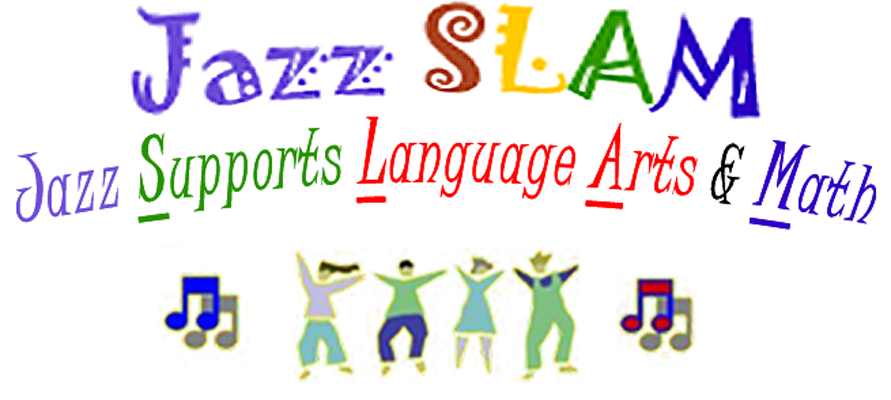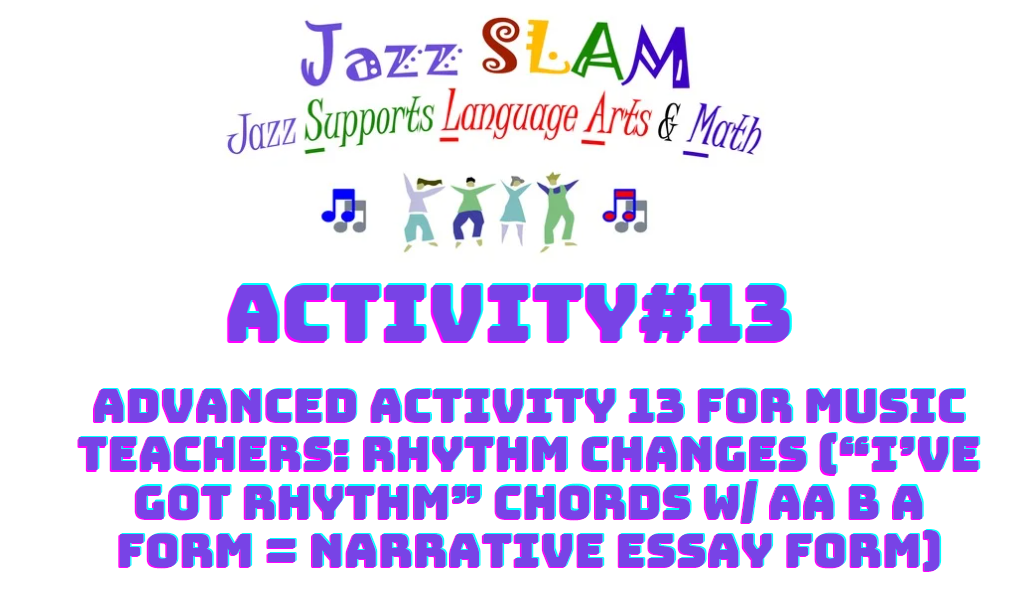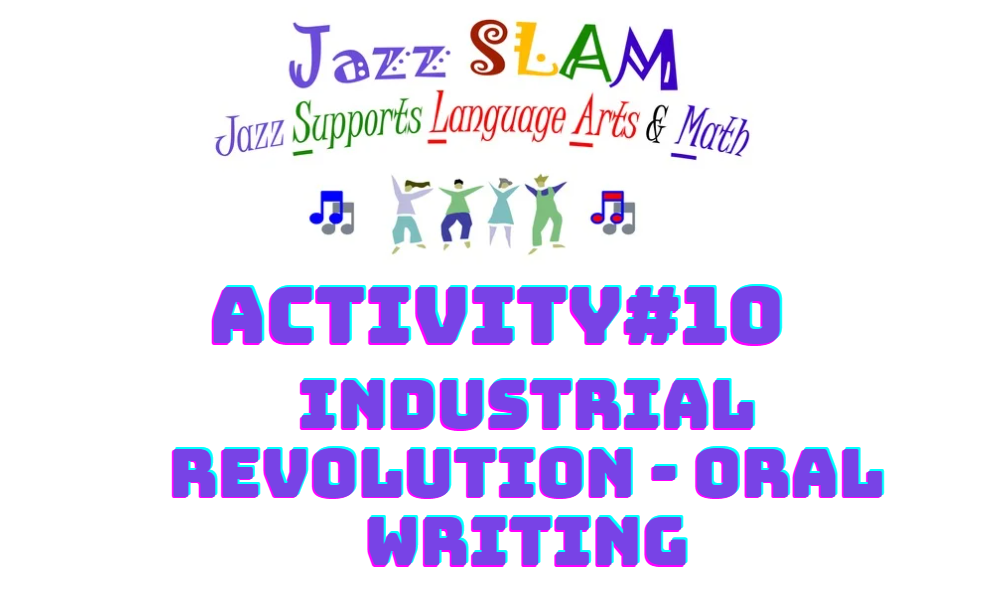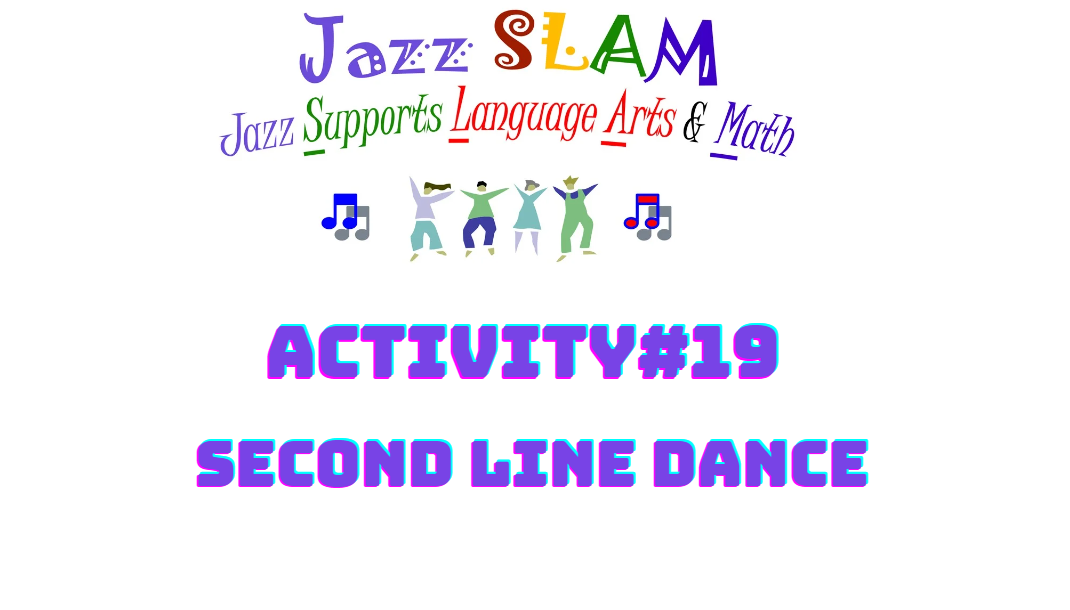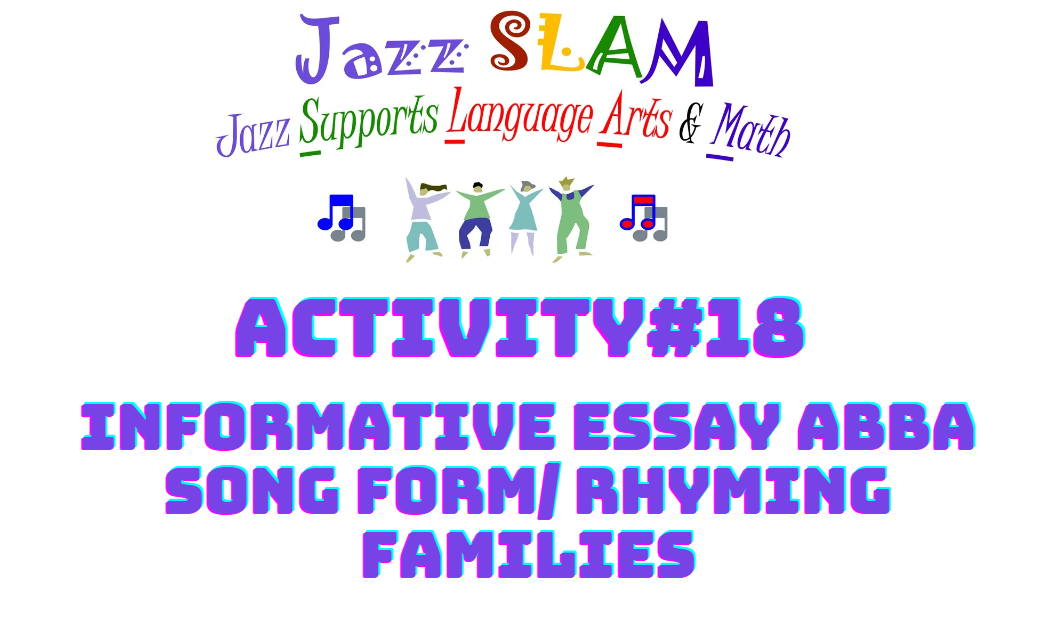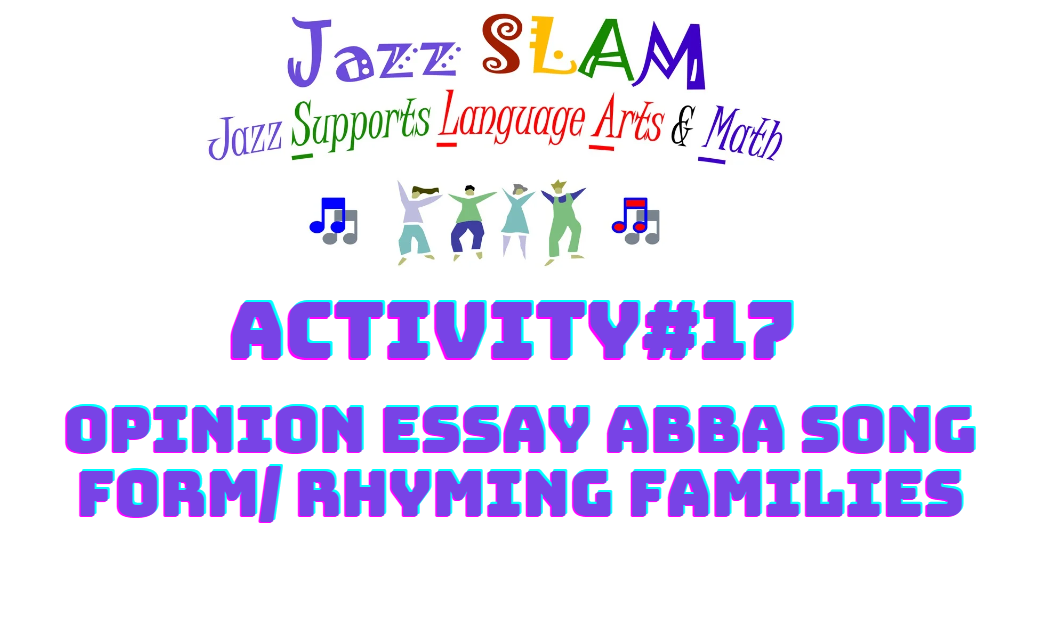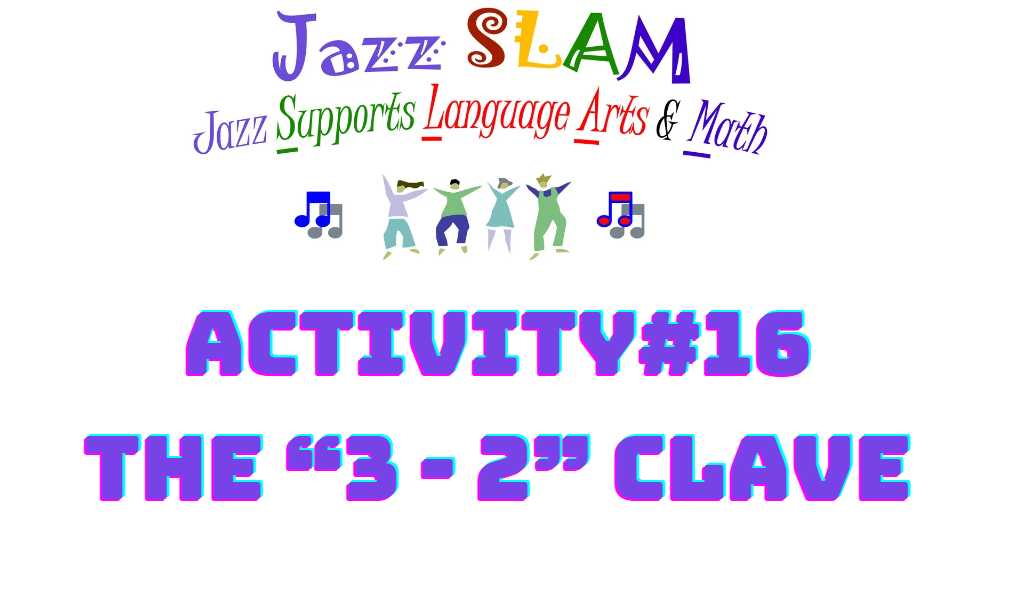About This Lesson
Learning Goals/Objectives
STUDENTS WILL BEABLE TO:
Learn and perform the chords progression for “Rhythm Changes”
Materials
Keyboard or Autoharp
Common Core Standards & NGSSS Music Standards
Common Core Standards
RL.3.2 Recount stories, including fables, folktales, and myths from diverse cultures; determine the central message, lesson, or moral and explain how it is conveyed through key details in the text.
RL.3.3 Describe characters in a story (e.g., their traits, motivations, or feelings) and explain how their actions contribute to the sequence of events.
RL.3.5 Refer to parts of stories, dramas, and poems when writing or speaking about a text, using terms such as chapter, scene, and stanza; describe how each successive part builds on earlier sections.
W.3.3 Write narratives to develop real or imagined experiences or events using effective technique, descriptive details, and clear event sequences.
W.3.4 With guidance and support from adults, produce writing in which the development and organization are appropriate to task and purpose.
W.3.5 With guidance and support from peers and adults, develop and strengthen writing as needed by planning, revising, and editing.
SL.3.1 Engage effectively in a range of collaborative discussions (one-on-one, in groups, and teacher-led) with diverse partners on grade 3 topics and texts, building on others’ ideas and expressing their own clearly.
SL.3.4 Report on a topic or text, tell a story, or recount an experience with appropriate facts and relevant, descriptive details, speaking clearly at an understandable pace.
SL.3.6 Speak in complete sentences when appropriate to task and situation in order to provide requested detail or clarification.
L.3.1 Demonstrate command of the conventions of standard English grammar and usage when writing or speaking.
L.3.2 Demonstrate command of the conventions of standard English capitalization, punctuation, and spelling when writing.
L.3.3 Use knowledge of language and its conventions when writing, speaking, reading, or listening.
L.3.5 Demonstrate understanding of word relationships and nuances in word meanings.
L.4.1: Demonstrate command of the conventions of standard English grammar and usage when writing or speaking.
L.4.2: Demonstrate command of the conventions of standard English capitalization, punctuation, and spelling when writing.
L.4.3: Use knowledge of language and its conventions when writing, speaking, reading, or listening.
L.4.5 Demonstrate understanding of word relationships, and nuances in word meanings.
RI.5.10: By the end of the year, read and comprehend informational texts, including history/social studies, science, and technical texts, at the high end of the grades 4–5 text complexity band independently and proficiently.
RL.5.2: Determine a theme of a story, drama, or poem from details in the text, including how characters in a story or drama respond to challenges or how the speaker in a poem reflects upon a topic; summarize the text.
RL.5.3 Compare and contrast two or more characters, settings, or events in a story or drama, drawing on specific details in the text (e.g., how characters interact).
RL.5.4: Determine the meaning of words and phrases as they are used in a text, including figurative language such as metaphors and similes.
L.5.1: Demonstrate command of the conventions of standard English grammar and usage when writing or speaking.
L.5.2: Demonstrate command of the conventions of standard English capitalization, punctuation, and spelling when writing.
L.5.3: Use knowledge of language and its conventions when writing, speaking, reading, or listening.
L.5.5 Demonstrate understanding of figurative language, word relationships, and nuances in word meanings.
RI.5.5: Compare and contrast the overall structure (e.g., chronology, comparison, cause/effect, problem/solution) of events, ideas, concepts, or information in two or more texts.
RI.5.10: By the end of the year, read and comprehend informational texts, including history/social studies, science, and technical texts, at the high end of the grades 4–5 text complexity band independently and proficiently.
RL.5.4: Determine the meaning of words and phrases as they are used in a text, including figurative language such as metaphors and similes.
RL.5.5 Explain how a series of chapters, scenes, or stanzas fits together to provide the overall structure of a particular story, drama, or poem.
SL.5.2: Summarize a written text read aloud or information presented in diverse media and formats, including visually, quantitatively, and orally.
W.5.7: Conduct short research projects that use several sources to build knowledge through investigation of different aspects of a topic.
W.6.3 Write narratives to develop real or imagined experiences or events using effective technique, relevant descriptive details, and well-structured event sequences.
W.6.4 Produce clear and coherent writing in which the development, organization, and style are appropriate to task, purpose, and audience. (Grade-specific expectations for writing types are defined in standards 1–3 above.)
W.6.5 With some guidance and support from peers and adults, develop and strengthen writing as needed by planning, revising, editing, rewriting, or trying a new approach.
SL.6.6 Adapt speech to a variety of contexts and tasks, demonstrating command of formal English when indicated or appropriate.
L.6.1 Demonstrate command of the conventions of standard English grammar and usage when writing or speaking.
L.6.2 Demonstrate command of the conventions of standard English capitalization, punctuation, and spelling when writing.
L.6.3 Use knowledge of language and its conventions when writing, speaking, reading, or listening.
L.6.5 Demonstrate understanding of figurative language, word relationships, and nuances in word meanings.
NGSSS Music Standards
MU.3.C.2.1Evaluate performances of familiar music using teacher-established criteria.
MU.3.F.1.1 Enhance the meaning of a story or poem by creating a musical interpretation using voices, instruments, movement, and/or found sounds.
MU.3.H.3.1Experience and discuss, using correct music and other relevant content-area vocabulary, similarities in the use of pattern, line, and form in music and other teacher selected contexts.
MU.3.O.3.1 Describe how tempo and dynamics can change the mood or emotion of a piece of music.
MU.3.S.1.1 Improvise rhythms or melodies over ostentation.
MU.3.S.2.1 Identify patterns in songs to aid the development of sequencing and memorization skills.
MU.4.C.2.2 Critique specific techniques in one's own and others performances using teacher established criteria.
MU.4.F.1.1 Create new interpretations of melodic or rhythmic pieces by varying or adding dynamics, timbre, tempo, lyrics, and/or movement.
MU.4.F.3.1 Identify the characteristics and behaviors displayed by successful student musicians and discuss how these qualities will contribute to success beyond the music classroom.
MU.4.H.3.1 Identify connections among music and other contexts, using correct music and other relevant content-area vocabulary, and explore how learning in one academic area can help with knowledge or skill acquisition in a different academic area.
MU.4.O.3.1 Identify how expressive elements and lyrics affect the mood or emotion of a song.
MU.4.S.1.1 Improvise phrases, using familiar songs.
MU.4.S.1.3 Arrange a familiar song for voices or instruments by manipulating form.
MU.4.S.2.1 Describe changes, using correct music vocabulary, in one's own and/or others performance over time.
MU.5.C.2.2 Describe changes, using correct music vocabulary, in one's own and/or others performance over time.
MU.5.F.1.1 Create a performance, using visual, kinesthetic, digital, and/or acoustic means to manipulate musical elements.
MU.5.F.3.1 Examine and discuss the characteristics and behaviors displayed by successful student musicians that can be applied outside the music classroom.
MU.5.H.3.1 Examine critical-thinking processes in music and describe how they can be transferred to other disciplines.
MU.5.O.3.1 Examine and explain how expressive elements, when used in a selected musical work, affect personal response.
MU.5.S.1.1 Improvise rhythmic and melodic phrases to create simple variations on familiar melodies.
MU.5.S.1.3 Arrange a familiar song by manipulating specified aspects of music.
MU.5.S.2.1 Use expressive elements and knowledge of musical structure to aid in sequencing and memorization and to internalize details of rehearsals and performance.
MU.68.C.2.1 Critique personal performance, experiment with a variety of solutions, and make appropriate adjustments with guidance from teachers and peers.
MU.68.C.2.2 Critique, using correct music vocabulary, changes in one’s own or others’ musical performance resulting from practice or rehearsal.
MU.68.F.1.1 Create a composition and/or performance, using visual, kinesthetic, digital, and/or acoustic means to manipulate musical elements.
MU.68.F.3.1 Describe how studying music can enhance citizenship, leadership, and global thinking.
MU.68.H.3.1 Identify connections among music and other content areas and/or contexts through interdisciplinary collaboration.
MU.68.O.3.1 Describe how the combination of instrumentation and expressive elements in a musical work can convey a specific thought, idea, mood, and/or image.
MU.68.S.1.1 Improvise rhythmic and melodic phrases to accompany familiar songs and/or standard harmonic progressions.
MU.68.S.1.3 Arrange a short musical piece by manipulating melody, form, rhythm, and/or voicing.
MU.68.S.2.1 Perform music from memory to demonstrate knowledge of the musical structure.
ESOL/ESE STRATEGIES
Steps
Step 1:
Teach your music students the chords to “Rhythm Changes” on the keyboard.(Note: “Rhythm Changes” = 32 bar song form)
- A= 8 bars
- 2ndA = 8 Bars
- B= 8 Bars
- 3rd& last A = 8 bars
Step 2:
Teach it numerically, so they can practice it in different keys.(Note: In the A sections, students will simply alternate between the I chord and the V7 chord.)1st8 bars = 1stA:
- Bar 1=I
- Bar 2=V7
- Bar 3=I
- Bar 4=V7
- Bar 5=I
- Bar 6=V7
- Bar 7 & 8 = I
*Repeat these 8 Bars for 2ndA
B
III7 for 2 Bars
VI7 for 2 Bars
II7for 2 Bars
V7 for the last 2 Bars.
*Repeat 8 bars of A
For Example: In C: 1stA: C= Bar 1, G7= Bar 2, C = Bar 3, G7= Bar 4, C = Bar 5, G7 = Bar6, C = Bars 7 & 8
2ndA same
B:E7 for 2 bars, A7 for 2 Bars, D7 for 2 Bars & G7 for last 2 bars3rdA same as 1st8 Bars
Step 3:
Using the JazzSlam theme song, students create a prompt/topic for the 2Asections.
Step 4:
State a problem related to the prompt/topic in the B section,
Step 5:
Wrap it up with a final A. (See below for JazzSLAM lyrics)
For Example: Details such as who, what, when, where, why in the1st 2Asections. Problem revealed in the B section. Solve the problem/wrap it up in the last A section.
JazzSLAM Theme Song lyrics
JazzSLAM are you lookin for some glory?
JazzSLAM then learn to write a story!
JazzSLAM write it from your heart
,but first you have to understand the form.
JazzSLAM. The form is the way
JazzSLAM. To organize what you say.
JazzSLAM in both stories and opinions
you can say just what you mean.
If your mind is in a fuddle, and your thinking’s all a-muddle,
come and spend an hour with us.
If confusion is an issue, you can cry into your tissue,
but your teachers will continue to fuss.
JazzSLAM. Watch everyone’s reactions
JazzSLAM. when you rattle off all your fractions.
JazzSLAM. The music and the lyrics
can help you with your writing and your math,
can help you with your writing and your math
Rubric/Instrument for Assessment
4 Points(Advanced):
A score of four is a response in which the student demonstrates a thorough understanding of the concepts and/or procedures embodied in the task. The student has responded correctly to the task, used sound procedures, and provided clear and complete explanations and interpretations.
3 Points(Proficient):
A score of three is a response in which the student demonstrates an understanding of the concepts and/or procedures embodied in the task. The students’ response to the task is essentially correct with the procedures used and the explanations and interpretations provided demonstrating an essential but less than thorough understanding. The response may contain minor flaws that reflect in attentive execution of procedures or indications of some misunderstanding of the underlying concepts and/or procedures.
2 Points(Basic):
A score of two indicates that the student has demonstrated only a partial understanding of the concepts and/or procedures embodied in the task. Although the student may have used the correct approach to obtaining a solution or may have provided a correct solution, the students’ work lacks an essential understanding of the underlying concepts.
1 Point(Emerging):
A score of one indicates that the student has demonstrated a very limited understanding of the concepts and/or procedures embodied in the task. The students’ response is incomplete and exhibits many flaws. Although the students’ response has addressed some of the conditions of the task, the student reached an inadequate conclusion and/or provided reasoning that was faulty or in complete. The response exhibits many flaws or may be incomplete.
0 Points:
A score of zero indicates that the student has provided a completely incorrect or non-interpretable response or no response at all.




